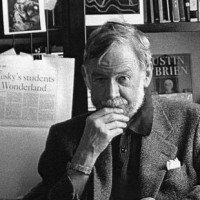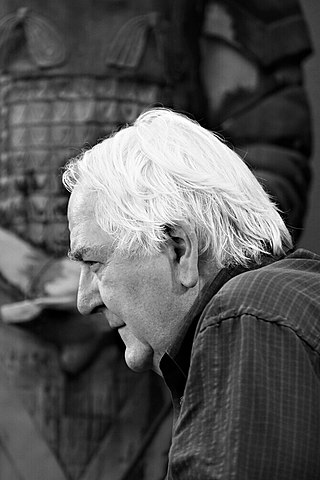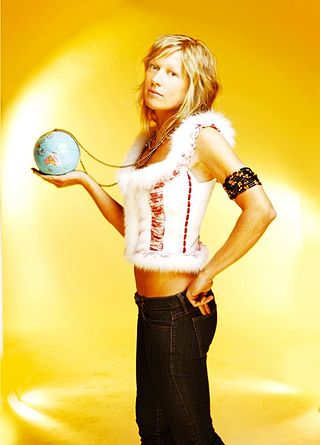
Essendon is a suburb in Melbourne, Victoria, Australia, 8 km (5.0 mi) north-west of Melbourne's central business district, located within the City of Moonee Valley local government area. Essendon recorded a population of 21,240 at the 2021 census.

Moonee Ponds is an inner-city suburb in Melbourne, Victoria, Australia, 7 km (4.3 mi) north-west of Melbourne's Central Business District, located within the City of Moonee Valley local government area. Moonee Ponds recorded a population of 16,224 at the 2021 census.

Brunswick is an inner-city suburb in Melbourne, Victoria, Australia, 5 km (3.1 mi) north of Melbourne's Central Business District, located within the City of Merri-bek local government area. Brunswick recorded a population of 24,896 at the 2021 census.

Robin Gerard Penleigh Boyd was an Australian architect, writer, teacher and social commentator. He, along with Harry Seidler, stands as one of the foremost proponents for the International Modern Movement in Australian architecture. Boyd is the author of the influential book The Australian Ugliness (1960), a critique on Australian architecture, particularly the state of Australian suburbia and its lack of a uniform architectural goal.

Dr Norman Kingwell Day is an architect, educator, and writer.

Penleigh and Essendon Grammar School is a multi-campus independent Uniting Church comprehensive co-educational early learning, primary and secondary day school, with three campuses located in Melbourne, Victoria, Australia. The school is the product of an amalgamation of two schools, Penleigh Presbyterian Ladies' College and Essendon Grammar School, which was completed in 1977. Uniforms were different for boys and girls until term 3 2020 when a new combined school uniform was launched. The school's campuses are located in Essendon, Moonee Ponds and Keilor East.

Peter Russell Corrigan was an Australian architect and was involved in the completion of works in stage and set design.
John Wardle is a Melbourne-based architect. He graduated from the Royal Melbourne Institute of Technology with a degree in Architecture.

The City of Essendon was a local government area about 5 kilometres (3 mi) northwest of Melbourne, the state capital of Victoria, Australia. The city covered an area of 21.22 square kilometres (8.19 sq mi), and existed from 1861 until 1994.

Daryl Sanders Jackson AO is an Australian architect and the owner of an international architecture firm, Jackson Architecture. Jackson also became an associate professor at University of Melbourne and Deakin University.
The Melbourne City campus of the Royal Melbourne Institute of Technology is located in the city centre of Melbourne in Victoria, Australia. It is sometimes referred to as "RMIT City" and the "RMIT Quarter" of the city in the media.
Neil Clerehan was an Australian architect and architectural writer.

Percy Edgar Everett,, was appointed chief architect of the Victorian Public Works Department in 1934 and is best known for the striking Modernist / Art Deco schools, hospitals, court houses, office buildings and technical colleges the department produced over the next 20 years.

Dr. Graeme Cecil Gunn AM is an Australian architect and former Dean of the School of Architecture at RMIT.

Cassandra Fahey is an Australian architect and interior designer residing in Melbourne. She is Director of the architecture firm "Cassandra Complex". She emerged in the public spotlight in 2000 because of the controversial 'Newman House', located in St Kilda, designed for media and football identity Sam Newman. She is also known for her works on "The Smith Great Aussie Home" and the BHP Billiton Healesville Sanctuary "Platypusary". Her work has received a number of awards as well as being featured in many local and international publications.
Jack Kidd was a former Australian rules footballer who played with Essendon, Carlton and Fitzroy in the Victorian Football League (VFL).
Samuel Merrifield was an Australian politician.
Ermin Smrekar (FAIA) was an Italian born Australian architect who practiced in Melbourne, Australia from the 1960s to the 1990s. He is known for designing outside the mainstream of Australian architecture in the period, his individual approach drew from organic architecture, angular and circular geometries, as well as historical sources, to create sometimes bold sculptural forms.
Evander McIver was an Australian architect, engineer and surveyor. McIver is best known for a number of Gothic Revival, mostly Presbyterian churches he designed in Melbourne, Australia, during the "boom" era of the 1880s.












